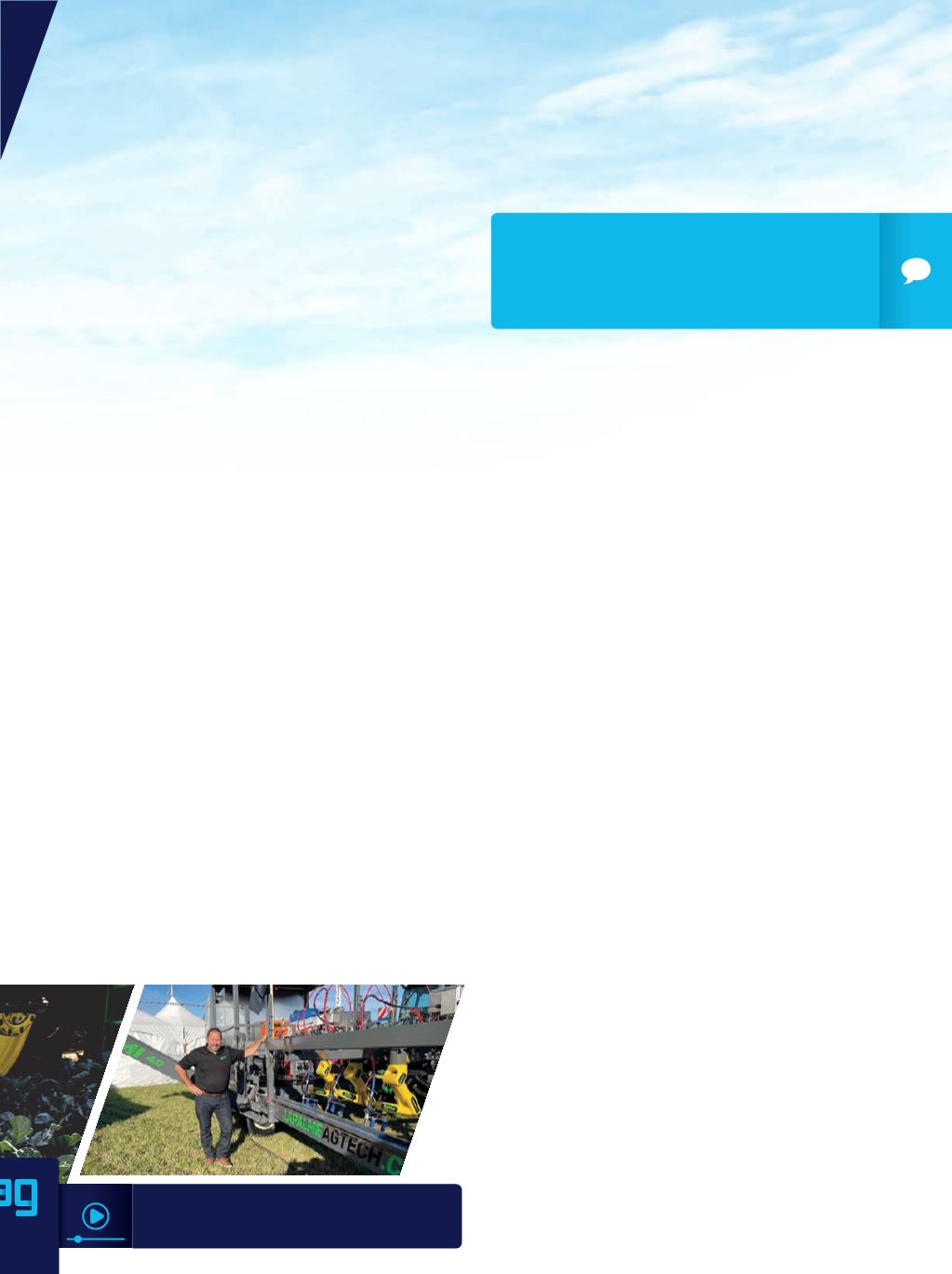

Using a tablet, such as an iPad, a farmer can choose
the size of the broccoli to harvest. “For example,
if a five-, six-, or seven-inch broccoli is opted for,
the robotic arms will only harvest that size,” stated
Belanger. “On the other hand, the cameras will detect
and count the other sizes so that at the end of the day
the farmer will have a complete inventory of the field
transmitted to their CRM System.
“This will allow the farmer to increase productivity
and to have a better planning of the future harvest,” he
added.
The vision system has been developed in partnership
with both the Quebec-based INO (Institut national
d’optique) and the CRVI (Centre de robotique et de
vision industrielle).
The Sami 4.0 utilizes artificial intelligence and was
taught by engineers to recognize the vegetable
broccoli, as well as how to make the required
movement to harvest it. To that end, more than
500,000 photographs of vegetables were taken in its
environment and in all possible weather conditions.
About 50,000 of those images were selected and
labeled for the robot to reference—but, said the
company, the process has to be repeated for each
vegetable type that can be picked by the robotic
system, something that was performed per producer
requests in 2020.
Initially field tested in 2020 with broccoli, Lapalme
was encouraged. “The trial worked very well, and
the results are conclusive. Since April (of 2020), our
team of engineers has been working on setting up a
demonstrator project including four robots.”
In September of 2021, the automated broccoli picking
system was officially unveiled in field tests at two
farms, in Montérégie and Lanaudière, Quebec.
“For the tests, we used four robotic arms in dynamic
with the tractor moving forward,” related Belanger. “The
speed of the tractor was the same as with the human
harvesters working behind it—but we (Sami 4.0)
managed to have a faster tempo.”
Benefits of the SAMI 4.0 robotic system,
include:
•
Increased productivity;
•
Increased crop management;
•
Fills the void of the picking labour shortage;
•
Performance report provided;
•
Improved inventory management for the
customer;
•
Return on Investment (ROI) in about three to
four years.
Because of Covid-19 travel restrictions, farmers have
experienced and may continue to experience a manual
labour shortage. To counter that, a variable quantity
of robotic arms can be affixed to Sami 4.0 allowing
a single tractor operator to perform the work of 10
pickers.
“One robotic arm performs the work of one human
harvester,” said Belanger, “But we can add many more
arms.”
The price of the SAMI 4.0 will be around $1.5-million,
depending on the number of robotic arms requested,
and can cover up to 40 rows wide.
Right now, SAMI 4.0 has only acquired AI knowledge
to harvest broccoli, but Lapalme Agtech is hopeful that
future iterations of the robotic system will be able to
harvest peppers, tomatoes, and other vegetables, as
well as fruits such as strawberries and raspberries.
Belanger pointed out that the tested beta SAMI will
visually look different when delivered to a customer,
as well as configured differently dependant on the
number of robotic arms requested by the farmer.
“ONE ROBOTIC ARM PERFORMS THE
WORK OF ONE HUMAN HARVESTER.
BUT WE CAN ADD MANY MORE ARMS.”
04
WATCH THE VIDEO
















